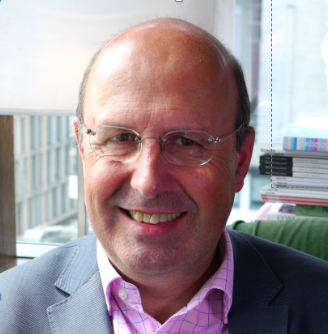You can sign up to our LinkedIn newsletter here.
So, you are thinking about becoming a Portfolio Executive?
If you’ve read our previous blogs, you’ll know about the benefits of this workstyle and career path and how you can build a portfolio of rewarding part-time executive positions. But to make this new world a reality, you have to be able to demonstrate the value you’ll bring to the clients who are going to be paying you.
It’s often called your ‘value proposition’ and this blog will help you understand why it’s important both for you and your buyers. We’ll also share a simple three step process to help you think about yours and help you reflect on where you’ve already brought value in your career to date.
Career freedom requires clarity
Being a Portfolio Executive offers the freedom to pick both the clients you want and the tasks you want to do for them. But it’s not the same as the corporate world where your position and value is a given. Here’s the big difference…
As a Portfolio Executive you are often taking a new idea to a potential client who may not be familiar with your approach – or you. You have to work out how you can clearly explain to them (as someone who is going to pay money to you) that you’re going to make a difference.
And to do that you have got to develop your value proposition – but it’s not straightforward. People buy for all sorts of different reasons, but at the heart of it, you have got to persuade them that you’ll be providing value month in, and month out.
The three how’s of value
Your value proposition is centred around three things:
1) How can you help them to make more money?
2) How can you help them to avoid spending as much money?
3) How can you make it more likely that they will succeed i.e. reduce the risks of their endeavour?
In other words, it’s more income, less cost, more opportunity for less risk.
Those are the things that have to be at the heart of it. If you cannot translate what you are going to be doing for them into one or more of those things, you are not going to be seen by them to be delivering value.
Why the substitution argument isn’t enough
They may think you’re wonderful, they may love spending time with you, but that isn’t enough. Ultimately, in the longer term, they will not see you are bringing value. And it can be quite easy to think you are demonstrating value if you compare yourself to a full-time executive director role. Because in principle you are a very senior experienced hire and if you were there full time you would cost so much more than they could afford, and actually they couldn’t use you properly to the full extent of your power.
So, if they’d already decided that they needed someone who had the calibre of being a full-time finance director, but they couldn’t afford a full-time finance director, then they could see the sense of having a part-time finance director. Well maybe – but you still haven’t demonstrated your value.
The numbers might look compelling too. Rather than paying between £70k-£100k for a full-time director of your calibre, they might see the merit of having someone of your calibre part-time, with other people providing some of the other activity that’s necessary. So that sort of makes sense, but it’s still just a substitution argument.
Demonstrating value wins through
To win that argument they have to believe they really do need a finance director, and that it’s better to have a high-quality person part-time than someone, of less quality, full-time. It’s part of what you have to demonstrate with your value proposition so it’s not just going to be a substitution argument.
It’s got to feel like you’re solving a problem – a felt need that they have now – that you are going to take away from them. That’s where they’ll see your true value.
So, what value can you bring?
Given your executive experience, you are a natural at delivering value. You just need to re-frame it in the context of a Portfolio Executive.
So, what are the felt needs that you’ve seen over and over again in your working life? What are the places where you can see you’ve really made a difference? And what are the things that you know can trip organisations up if you get them wrong? How have you saved money, reduced costs? Or how have you created new opportunities for the business? How have you reduced risks? How have you bought in new revenue streams? Or increased the revenue that people have got?
If you’re in a back-office situation like a finance or HR director, or possibly a CIO or an operations director, it may not be obvious how you’ve increased the top-line, the revenue. It might not even be obvious about how you have reduced costs, although you ought to have done that. It may have been that a lot of your role was just reducing risk, preventing things going wrong.
In your new role as a part-time Portfolio Executive, you’re going to have to find reasons more than preventing things from going wrong. Because you are asking people to spend money that they are not already spending. You have got to build that value proposition.
Need some help with your value proposition?
Although building a value proposition is not straightforward, you probably have all of the elements to build that proposition available to you. And it’s something you really need to be clear about. It’s the value proposition that will help them realise they need you – and so enable you to do the work you want to do, with the clients you want to, at the rates you want to charge.
Understanding and demonstrating your value will help you secure the high value, part-time executive roles that will establish you as a successful Portfolio Executive. But getting to this point, and adjusting to the career path that comes with it, isn’t something everyone feels comfortable doing alone.
If you are thinking about becoming a Portfolio Executive and like the sound of working with a group of people who have successfully made that move, then check out our Portfolio Executive programme. Not only will you understand the true value you bring, you’ll realise the rewards that can come with it.

Charles McLachlan is the founder of FuturePerfect and on a mission to transform the future of work and business. The Portfolio Executive programme is a new initiative to help executives build a sustainable and impactful second-half-career. Creating an alternative future takes imagination, design, organisation and many other thinking skills. Charles is happy to lend them to you.
